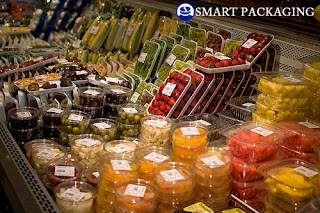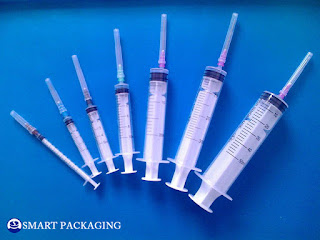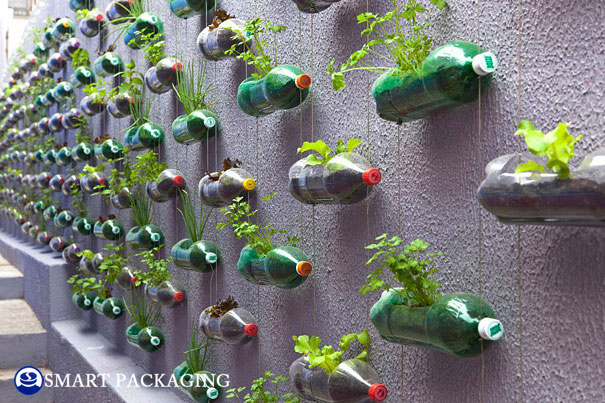Plastics are a subset of materials known as Polymers. These are composed of large molecules formed by joining many smaller molecules together (monomers). Other kinds of polymers are fibres, elastomers, surface coating and biopolymers, such as cellulose, proteins and nucleic acids. Plastics owe their name to their capability to be shaped to form articles of convenient value by various conversion and forming processes. These are some atypical properties of plastics materials, which make them unique so that products can literally be tailor-made out of these materials.
In fact, plastics have encompassed every facet of human life viz. agriculture and water consumption, building construction, communication, small and bulk packaging, education, medicine, transportation, defence, consumer durables to name a few. One of the reasons for the great popularity of plastics is due to the remarkable range of properties demonstrated by them because of their ease of processing. Hence, the demand for plastics has been increasing in modern living.
The Internet, globalisation, increased speed of communication, faster means of transportation, the advance of surgical medicine - all these would not be possible without plastics. Unremitting technological innovation by the plastics industry means that even more efficient, lightweight and compliant forms of plastics are being developed for an increasing range of uses. It is these advances that allow plastics to play an imperative role in the pursuit of sustainable development, by bringing innovative solutions to the full range of challenges facing society. Plastics have been providing help to tackle the world's water circulation crisis, with affordable, easily constructed piping providing solutions to clean water shortages for 5.5 million people in Asia, the Middle East and Africa. Also, the use of plastics drastically reduced the use of traditional usage of wood and other forest products thus resulting in the reduction of deforestation.
 It is estimated that the use of plastics as a whole actually saves more oil than is needed for their manufacture. At end-of-life, plastics can be a valuable alternative energy source in their own right. Plastics recycling continues to increase in the world while energy recuperation is a responsible use of our oil resources, rerouting waste from landfill and helping to preserve fossil fuels. Tapping the sun and wind is already bringing clean and efficient energy to people worldwide and is greatly facilitated by the use of plastics that constitute major parts of the cells and turbines. Incessant improvements in the material itself and recovery technologies mean that, in the future, packaging will become even lighter and more resource-efficient.
It is estimated that the use of plastics as a whole actually saves more oil than is needed for their manufacture. At end-of-life, plastics can be a valuable alternative energy source in their own right. Plastics recycling continues to increase in the world while energy recuperation is a responsible use of our oil resources, rerouting waste from landfill and helping to preserve fossil fuels. Tapping the sun and wind is already bringing clean and efficient energy to people worldwide and is greatly facilitated by the use of plastics that constitute major parts of the cells and turbines. Incessant improvements in the material itself and recovery technologies mean that, in the future, packaging will become even lighter and more resource-efficient.
Plastics have proved to have a wide range of applications in a large number of fields and their applications are increasing due to the advantage of low cost, high durability and easy availability.
Plastics are treated as versatile materials since the properties of these materials can be tailored to meet specific demands by varying molecular weight, molecular weight distribution and side chain branching. Further making copolymers and polymer blends and alloys provide on the mechanism for providing a synergism in properties and tailor making materials for specific applications.
Plastic is used to make optic fibres that are laid under the sea to provide high-speed internet connection to the users. Without the material, innovation is not possible in the field of technology. Modern air conditioners are moulded in plastic to ensure lightweight appliances that can be installed in commercial and residential premises. It also used in making snow, skateboards and modern aviation equipment.
 A lot has been written about the material by environmentalists, however, a majority of them is negative content highlighting the issues. Scientists opine that plastic is non-biodegradable however it can be recycled to save the environment. Technological changes are taking place to reduce the harmful effect caused by its waste on the planet. People need to view the usage of plastic in an objective manner rather than drawing the conclusion by analyzing only one side of the story. At present they have not found any replacement of the material, therefore it is important to monitor the usage.
A lot has been written about the material by environmentalists, however, a majority of them is negative content highlighting the issues. Scientists opine that plastic is non-biodegradable however it can be recycled to save the environment. Technological changes are taking place to reduce the harmful effect caused by its waste on the planet. People need to view the usage of plastic in an objective manner rather than drawing the conclusion by analyzing only one side of the story. At present they have not found any replacement of the material, therefore it is important to monitor the usage.
IMPORTANT FACTORS IN PLASTIC PACKAGING
There are six primary types of plastic most commonly used in bottle manufacturing:
Polyethene terephthalate (PET or PETE) is common in food, medicine, beverage bottles and more. PET has a recycling symbol of 1 and is easy to recycle. High-density polyethene (HDPE) is extremely common in plastic bottle packaging and is used for many food, beauty, household and automotive items. HDPE has a recycling symbol of 2 and is fairly easy to recycle. Low-density polyethene (LDPE) is a flexible plastic and is durable as well. Squeezable beverage bottles and other food or household products are often made from LDPE. This plastic has as a recycling symbol of 4 and is more difficult to recycle, as not all recycling centres will accept LDPE products. Polypropylene (PP) is a strong plastic that can hold up under high temperatures. Often used for household bottles, such as food and garden products, PP is also common as well in medicine and vitamin bottles. PP has a recycling symbol of 5 and is difficult to recycle since many recycling centres will not accept PP items.Polycarbonate/polyamide (Other) is often used for industrial liquid bottles. “Other” plastic bottles are common in medical storage and other large containers and products. Items marked “Other” have a recycling symbol of 7 and are very difficult to recycle.
RE-USE OF PET BOTTLES
PET bottles are also recycled as-is (re-used) for various purposes, including for use in school projects, and for use in solar water disinfection in developing nations, in which empty PET bottles are filled with water and left in the sun to allow disinfection by ultraviolet radiation. PET is useful for this purpose because many other materials (including window glass) that are transparent to visible light are opaque to ultraviolet radiation.
A novel use is as a building material in third-world countries. According to online sources, the bottles, in a labour-intensive process, are filled with sand, then stacked and either mudded or cemented together to form a wall. Some of the bottles can be filled instead with air or water, to admit light into the structure.
Click Here for more about Plastic Bottle Manufacturing.
Click Here for more about Plastic Bottle Manufacturing.



No comments:
Post a Comment